You know that we are always looking for ways to use the leftovers of our sourdough starter as they are just too good to be simply thrown away.
So we are happy to present the next member of this small but growing family: Our sourdough bread from leftover sourdough starter. Welcome it and give it a try – you will like it!
You don’t have a sourdough starter yet? No worries, we’ve got you! Just check out our guide on how to create a sourdough starter.
Things to know before you start
Time Schedule
| Steps | Work time | Waiting time |
| Levain | ~5 minutes | 12-14 hours |
| Mix | ~20 minutes | 10 minutes |
| Bulk Fermentation, Stretch & Fold | ~20 minutes | 3 hours |
| Shape | ~10 minutes | – |
| Proof | – | 2 hours |
| Score | ~5 minutes | – |
| Bake | ~5 minutes | 45 minutes |
| Cool | – | 2 hours |
This sourdough bread from leftover sourdough starter will be ready to eat in under 21 to 23 hours.
Total ingredients
| Weight | Ingredient |
| 50 g | Sourdough starter – Preferably from whole wheat flour |
| 50 g | Sourdough starter – Preferably from rye flour |
| 425 g | All-purpose flour |
| 55 g | Rye flour |
| 10 g | Salt |
| 3 g | Yeast – Fresh |
| 12 g | Butter |
| 10 g | Honey |
| 340 g | Water |
You will have a dough of about 955 g in total.
Difficulty
A relatively simple recipe. Just the shaping could be a bit more tricky because of the slightly higher hydration in this recipe. Consider having a look at our recipe sourdough bread for beginners which contains a lot of details for the different steps if you have never baked one before.
Baking tools
To get a nice oval shape for your loaf an oval banneton proofing basket is recommended. Besides that you should be good to go with some of our should have baking tools.
Steps
1. Levain
| Weight | Ingredient |
| 50 g | Sourdough starter – Preferably from whole wheat flour |
| 50 g | Sourdough starter – Preferably from rye flour |
| 100 g | All-purpose flour |
| 100 g | Water – Room temperature |
- Mix your sourdough starter with the ingredients above
- Store sealed for 12 to 14 hours at 20-22°C (68-71,6°F)
2. Mix
| Weight | Ingredient |
| – | Levain |
| 325 g | All-purpose flour |
| 55 g | Rye flour |
| 10 g | Salt |
| 3 g | Yeast – Fresh |
| 12 g | Butter |
| 10 g | Honey |
| 240 g | Water |
- Mix all of the mentioned ingredients except the butter together in a stand mixer for 6 minutes on speed level one and 8 minutes on speed level two
- Add the butter after 9 minutes of mixing
- The dough will still stick a bit to the bowl after mixing, but should be smooth
3. Bulk Fermentation, Stretch & Fold
- Cover the dough and let it rest for a total of 3 hours at 20-22°C (68-71,6°F)
- During that time stretch & fold the dough every 30 minutes (5 times in total) and after the 5th time let it ferment further for 30 minutes until 3 hours in total are reached
- After each stretch and fold put it back to the bowl and cover it again so it doesn’t dry out
4. Shape
- Get the dough in shape by long moulding it
5. Proof
- Dust your proofing basket with a bit of all-purpose flour
- Put your previously shaped dough seam-side-up in the dusted proofing basket
- Add a bit of flour on top and cover it with a towel
- Let it proof for 30 minutes on the counter before you put it in the fridge at 5-8°C (41-46,4°F) for 90 more minutes
6. Score
- Cover a pizza peel with parchment paper
- Take your proofed dough out of the fridge
- Gently take your dough out of the proofing basket by flipping it upside down on the pizza peel
- With a bread lame make 6 quick cuts (about 2 cm deep) on top of the dough from top to bottom
7. Bake
- Preheat oven to 250°C (482°F) for ~45 minutes with the upper and lower heat function
- Put the loaf in the oven, create steam and bake for 45 minutes
- After 10 minutes lower the temperature to 215°C (419°F), let the steam out by opening the oven door for ~45 seconds and close it again
8. Cool
- After baking take out your sourdough bread immediately
- Let your bread cool for about 2 hours on some kind of grid before you start cutting it
Conclusion
Crust
This sourdough bread has a soft crust but it’s firm and not rubbery.
Crumb
The crumb is soft too with mostly fine and even pores. There are only a few bigger pores closer to the crust.
Taste
The taste of this bread is mild and very balanced. It also has a slightly sour taste which is based on the sourdough used for baking it.
Goes good with
As the taste is mild and well balanced, this bread can also be combined with things that have a heavier taste such as a good hearty cheese or some ham. If you prefer the sweeter things then there is no need to panic: They go good with this bread too.

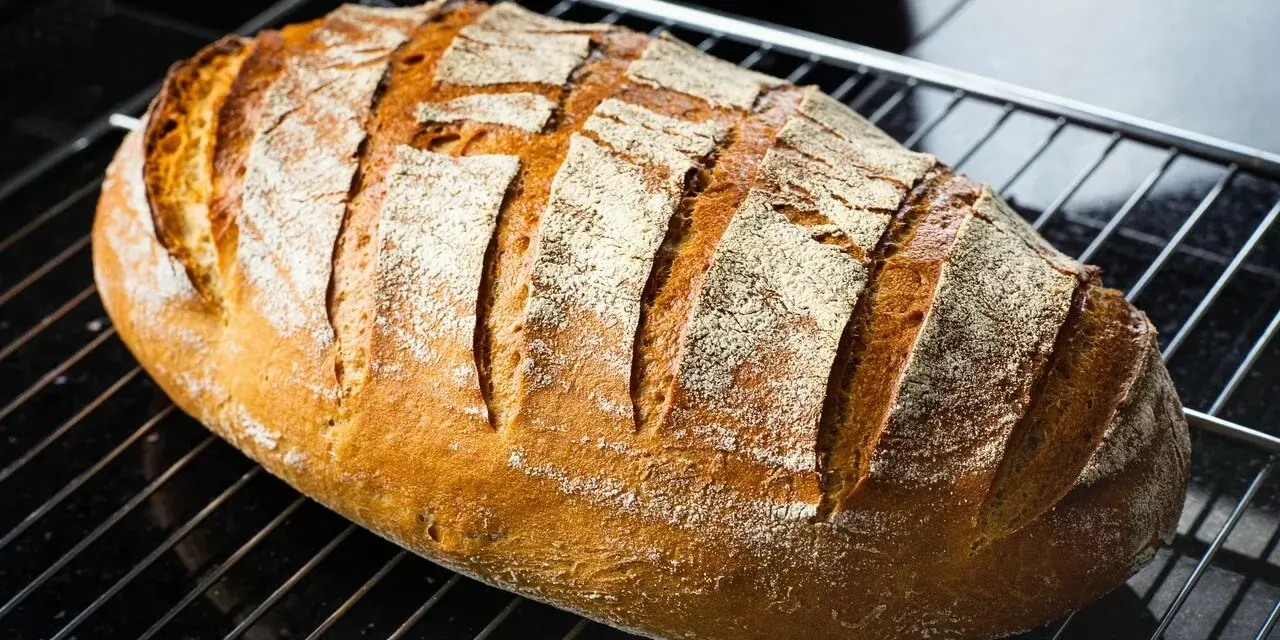
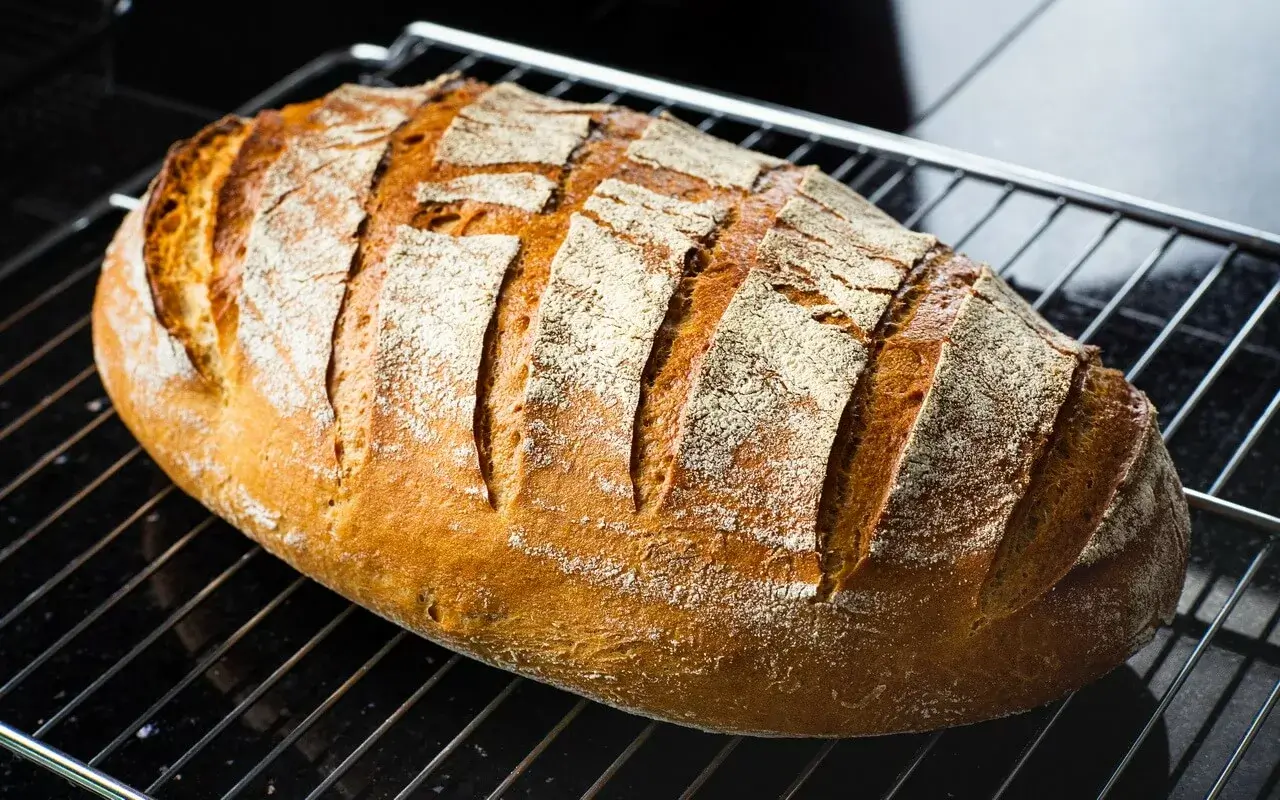
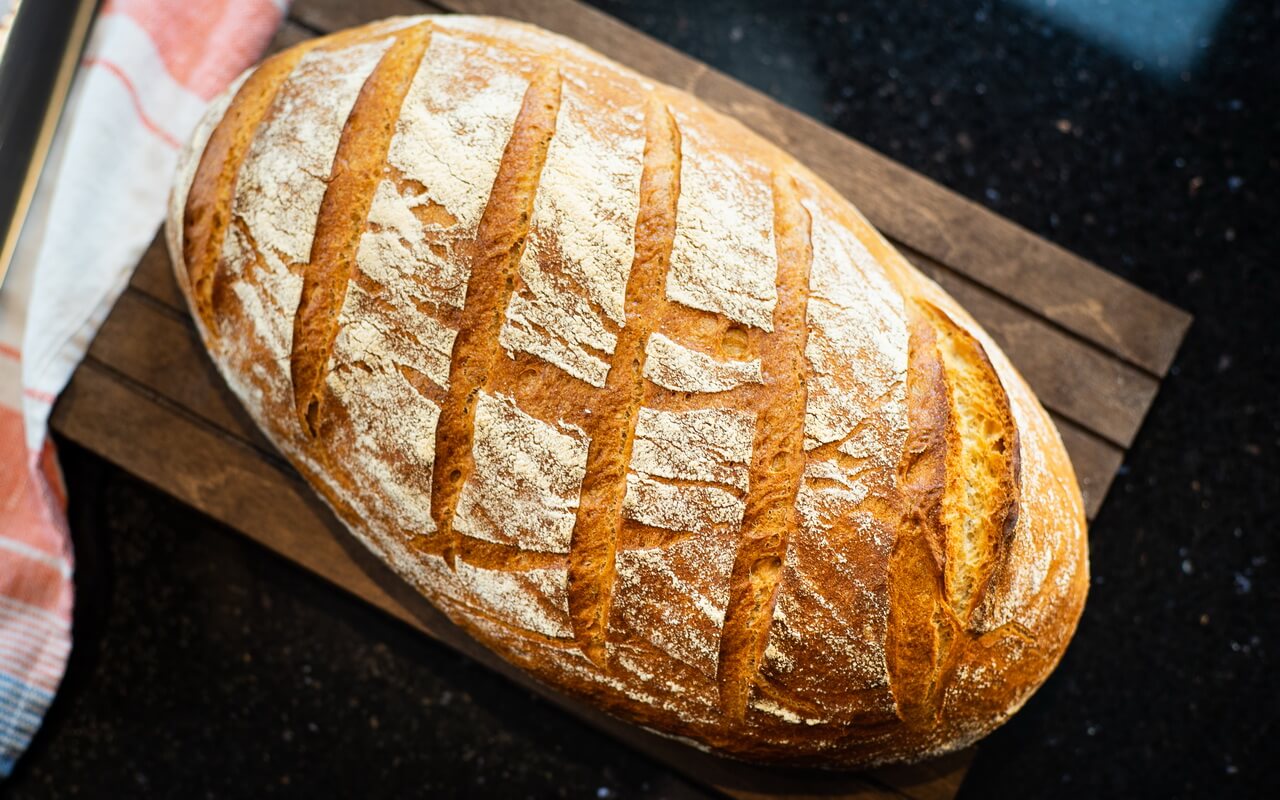

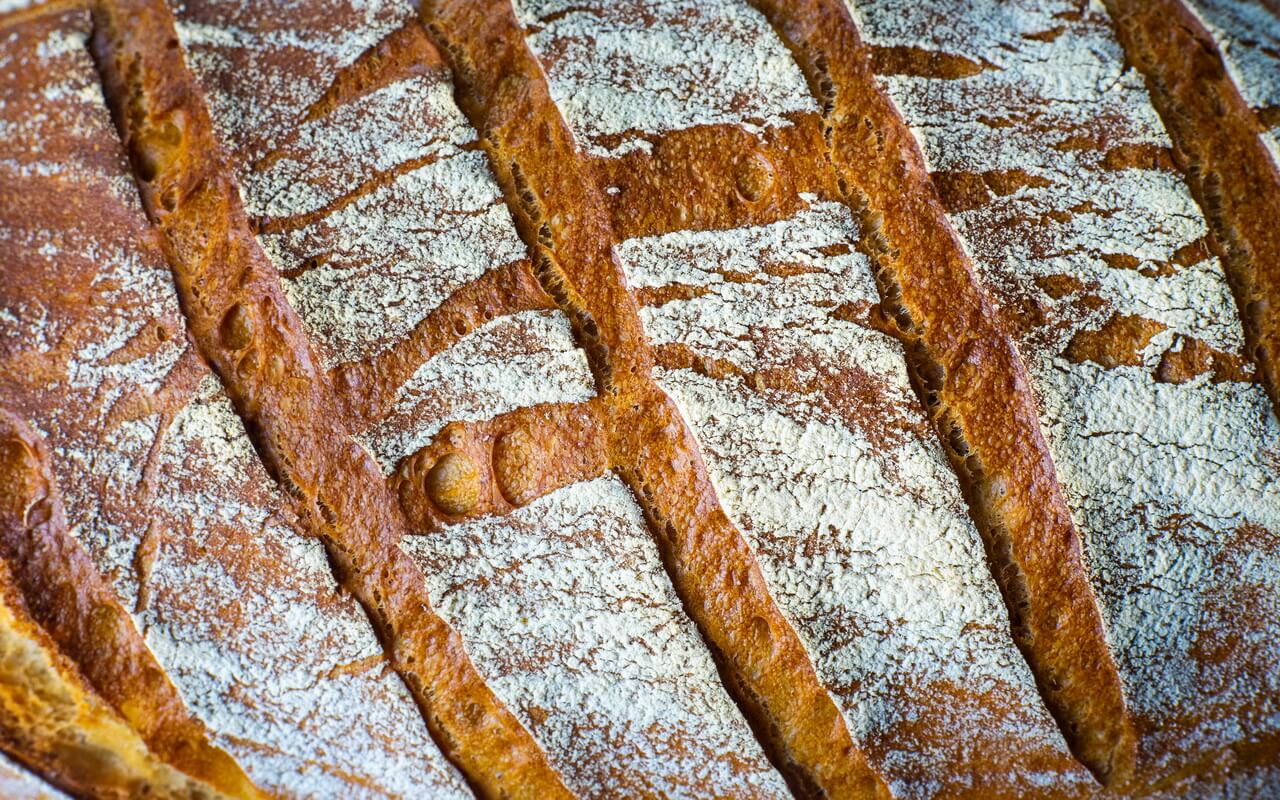
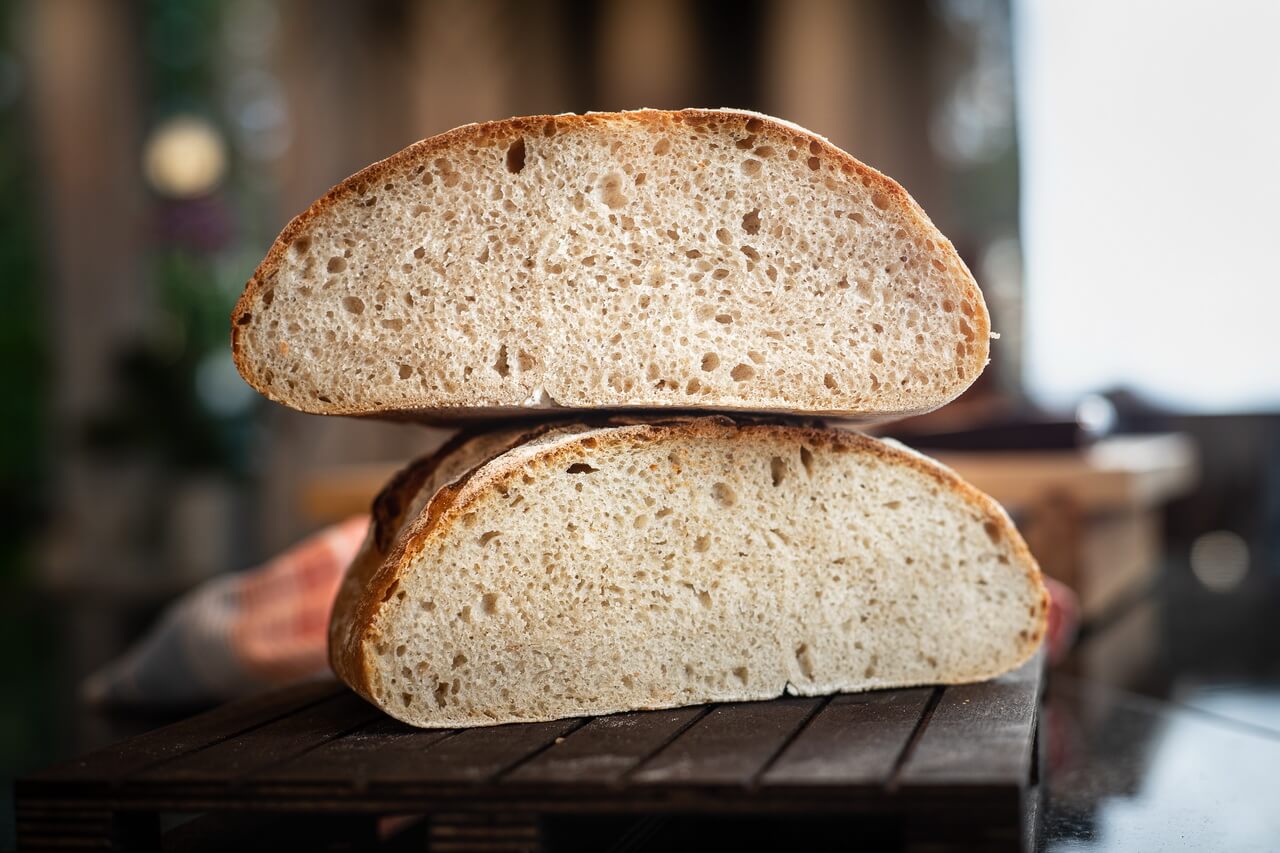
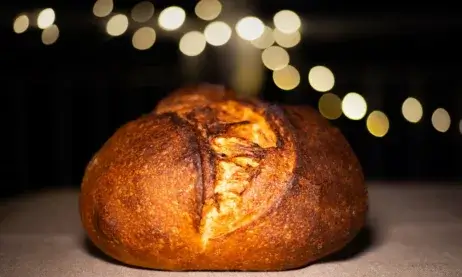
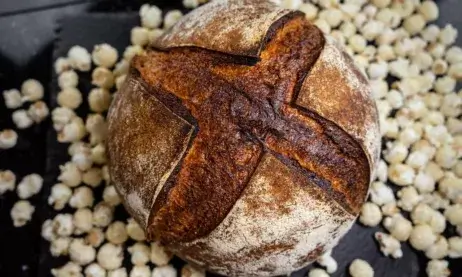
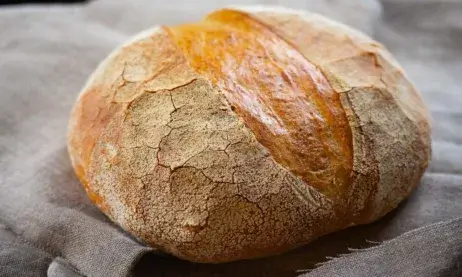
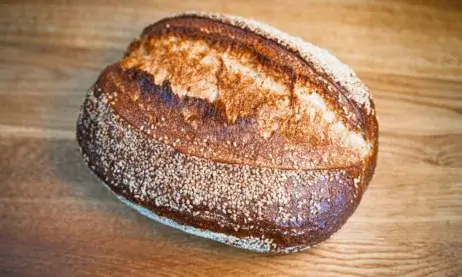
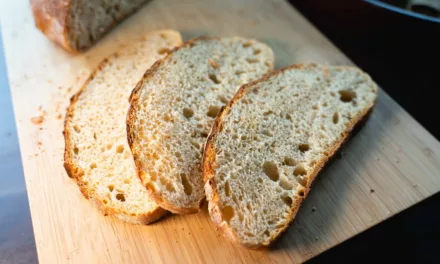
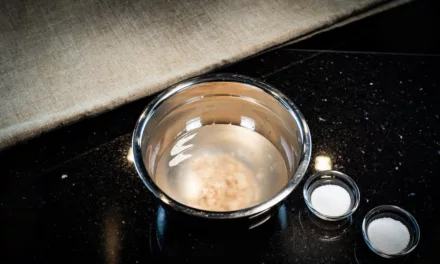

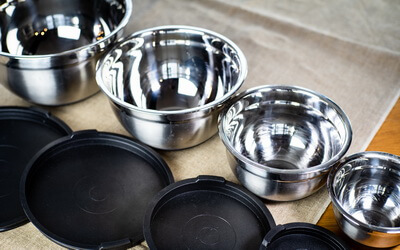
One of the best bread recipes I’ve used, very easy to follow, my new go to for leftover sourdough starter!
Thank you very much for the kind words.
We try our best to write the recipes in a way that they are very easy to follow so you can reach the same results as we are.
Hi,
Would it be ok to use 100 grams of sourdough starter made with unbleached organic flour instead of the 50/50 ratio mentioned above for the levain?